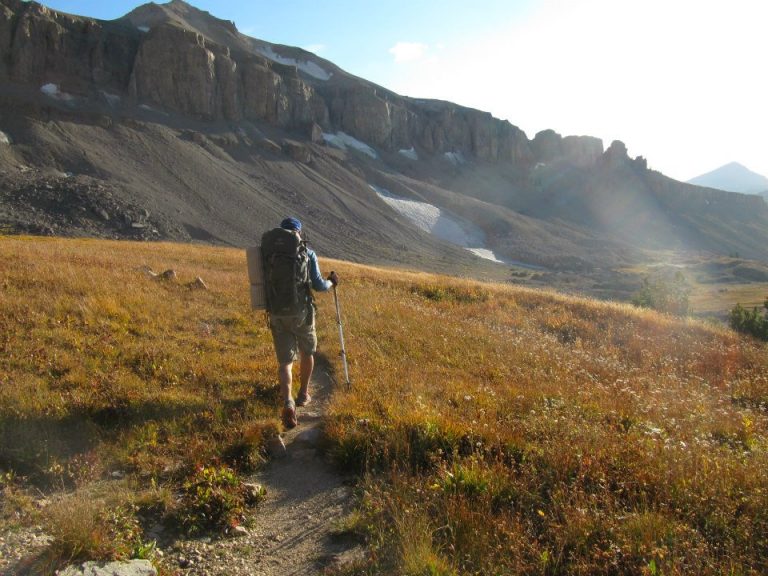Do trekking poles help athletes with speed, efficiency, and stability?
BLUF:
- Trekking pole use in varied terrain has a higher overall metabolic demand, although the extra demand is not perceived by the athlete. The demand is “spread out” to the upper body, somewhat relieving the focused demand on the legs.
- Trekking poles reduce the ground impact force on the athlete’s joints in hiking and trail running on flat, uphill, and downhill, relieving arthritic-related discomfort.
- Trekking poles may increase the overall athlete speed on a mountain course, but considerations should be made based on the additional metabolic demands for refueling/nutrition.
Summary:
This study investigates the impact of using trekking poles on physiological responses during hiking, without affecting perceived exertion. The research, conducted with fourteen recreational hikers, aimed to determine if trekking poles alter physiological responses across different terrains and grades. Participants completed hiking trials on a course featuring varied terrain, both with and without trekking poles, at a self-selected speed.
Results:
The study found that using trekking poles increased oxygen consumption, ventilatory efficiency, and heart rate compared to hiking without poles, across all grades of terrain. However, the perceived exertion (RPE) remained unchanged regardless of pole use. This indicates that while trekking poles enhance physiological demand, they do not impact the hiker’s perceived effort.
Takeaway:
The use of trekking poles during hiking can enhance the physical intensity of the activity (increased calorie burn and cardiovascular demand) without making the exercise feel harder. This makes trekking poles a useful tool for individuals seeking to increase their workout intensity without a corresponding increase in perceived effort, especially across varied terrains.
Summary:
This review paper explores the effects of using trekking poles during hiking. It examines a range of research studies on the topic to understand how trekking poles impact physiological, kinematic, and biomechanical responses during hiking. The review covers the effects of trekking poles on parameters like energy expenditure, balance, muscle activity, and joint forces. The authors have collated information from various studies, providing a comprehensive overview of the subject.
Results:
The review indicates that trekking poles can increase physiological demand (like heart rate and energy expenditure) while also providing biomechanical benefits, such as reduced joint loading and improved balance. There’s evidence suggesting both positive and negative impacts of trekking poles, including increased cardiovascular demand but decreased lower extremity stress and improved stability.
Takeaway:
For individuals interested in hiking, this review suggests that trekking poles can offer various benefits like improved balance and reduced stress on the lower body. However, it also increases cardiovascular demand, which should be considered based on individual fitness levels and hiking objectives. The review provides a balanced view of the advantages and disadvantages of trekking pole usage, allowing hikers to make informed decisions about their use.
Summary:
The study examines the effects of using trekking poles on the muscular and metabolic costs of uphill backpacking. Ten volunteers, regular backpackers, were tested on an inclined treadmill, both with and without trekking poles, while carrying a backpack weighing approximately 30% of their body mass. The study aimed to determine if trekking poles alter the kinematics, electromyography (EMG) data, and metabolic cost during uphill backpacking.
Results:
The use of trekking poles resulted in longer stride lengths, kinematics more akin to unloaded walking, and reduced lower extremity muscle activity. However, pole use also increased heart rate, suggesting a greater cardiovascular demand to support increased upper body muscle activity. Perceived exertion was lower with poles, even though the physiological demand was higher.
Takeaway:
Trekking poles can redistribute the effort of carrying a backpack, alleviating some stress from the lower extremities and allowing for a more comfortable hiking experience. This may be particularly beneficial in uphill backpacking scenarios. While increasing cardiovascular demand, poles can lead to more comfortable hiking, as indicated by lower ratings of perceived exertion.
Summary:
This review assesses the biomechanical and physiological effects of using poles in trail running. It compiles various studies to evaluate how poles impact factors like plantar pressure, ground reaction forces, and muscle activation during trail running.
Results:
The use of poles in trail running tends to decrease plantar pressure and ground reaction forces, indicating a reduced impact on the lower body. The studies also showed variations in muscle activation, with increased upper body muscle activity and a mix of decreased or unchanged lower body muscle activity.
Takeaway:
For trail runners, poles can provide biomechanical benefits by reducing the impact on the lower body, potentially decreasing the risk of injury. Additionally, the increased use of upper body muscles suggests a more full-body workout, although this may increase overall cardiovascular demand. The findings are relevant for runners looking to optimize performance and reduce injury risk on varied terrain.
Summary:
The study investigates the efficiency and perceived effort of using trekking poles during steep uphill hiking. It involved athletes hiking uphill with a heavy load, comparing their performance metrics with and without trekking poles.
Results:
Findings indicated that the use of trekking poles increased uphill hiking efficiency by approximately 10% and reduced perceived exertion by 20%. This was measured through changes in heart rate, breathing rate, and subjective exertion ratings.
Takeaway:
Trekking poles significantly reduce physical strain and increase efficiency in uphill hiking, especially under heavy load conditions. This suggests their beneficial use in physically demanding hiking scenarios, particularly on steep terrains.

